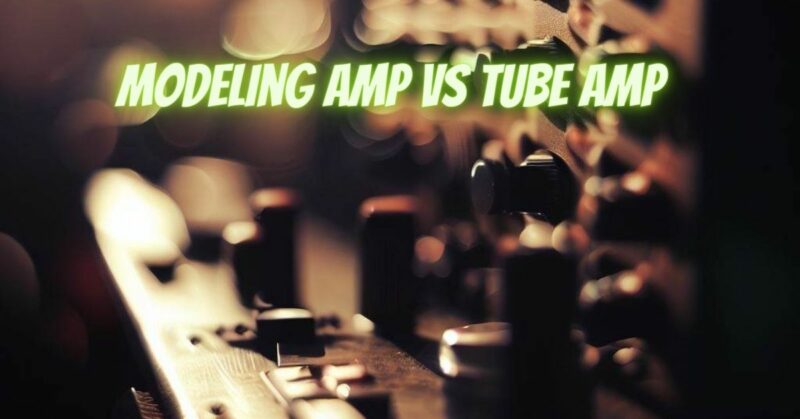The eternal debate in the world of guitar amplification revolves around the choice between modeling amps and traditional tube amps. Both technologies offer distinct sonic characteristics, and each has its loyal following among musicians. In this informative article, we’ll delve into the key differences between modeling amps and traditional tube amps, exploring the nuances of tone, technology, and the considerations that guitarists must weigh when making this crucial decision.
Modeling Amps: The Digital Sonic Architects
Modeling amplifiers, a product of digital technology, use sophisticated software to replicate the sounds of various amplifiers, cabinets, and effects. These amps can emulate the tones of classic tube amps, solid-state amps, and even unique, fictional setups. Here are some key features and considerations associated with modeling amps:
- Versatility and Variety: Modeling amps are renowned for their versatility. They can replicate a wide range of tones, allowing guitarists to explore different sounds without the need for multiple physical amplifiers.
- Compact and Portable: Modeling amps are often lightweight and compact, making them ideal for musicians who prioritize portability and ease of transport.
- Integrated Effects: Many modeling amps come equipped with a variety of built-in effects, such as reverb, delay, modulation, and more. This eliminates the need for external pedals, providing an all-in-one solution for guitarists.
- Affordability: In general, modeling amps tend to be more budget-friendly than their traditional tube counterparts, making them accessible to a broader range of musicians.
Traditional Tube Amps: The Time-Honored Analog Titans
Tube amplifiers, powered by vacuum tubes, have been a staple in the music industry for decades. They are celebrated for their warm, responsive, and organic tones. Here are key features and considerations associated with traditional tube amps:
- Warm and Natural Sound: Tube amps are revered for their warm and natural sound, characterized by rich harmonics and a smooth breakup when pushed to higher volumes.
- Dynamic Response: Tube amps are known for their responsive touch and dynamic range. They react to the guitarist’s playing style, delivering a nuanced and expressive performance.
- Classic Construction: Traditional tube amps often feature classic construction with point-to-point wiring, emphasizing craftsmanship and a vintage aesthetic.
- Amplifier Saturation: Tube amps exhibit a desirable saturation or distortion when driven hard, providing a classic rock and blues sound that many guitarists adore.
Comparative Analysis
- Tone Quality:
- Modeling Amps: While modeling amps have come a long way in replicating tones, some purists argue that they may lack the depth and authenticity found in traditional tube amps.
- Traditional Tube Amps: Renowned for their rich, full-bodied tones, tube amps are considered by many as the gold standard for achieving classic and timeless guitar sounds.
- Portability and Convenience:
- Modeling Amps: Ideal for gigging musicians who value portability and the convenience of having various tones at their fingertips without carrying multiple heavy amplifiers.
- Traditional Tube Amps: Generally larger and heavier, tube amps may be less convenient for musicians frequently on the move.
- Customization and Versatility:
- Modeling Amps: Excel in versatility, allowing users to experiment with a vast array of tones and effects within a single unit.
- Traditional Tube Amps: Customization often involves modifying physical components, making it less straightforward than digital presets found in modeling amps.
- Sonic Characteristics under Different Settings:
- Modeling Amps: Consistent tones across various environments, making them more reliable for gigging and recording in different spaces.
- Traditional Tube Amps: Responsive to the acoustics of different venues, providing a more dynamic and varied experience.
In the end, the choice between a modeling amp and a traditional tube amp boils down to personal preferences, playing style, and the sonic characteristics a guitarist seeks. Modeling amps offer convenience, versatility, and affordability, while traditional tube amps provide a classic, warm, and dynamic sound that has stood the test of time. Whether you’re drawn to the digital precision of modeling or the analog warmth of tubes, both technologies have their place in the diverse landscape of guitar amplification. Ultimately, the right choice depends on the unique needs and preferences of the guitarist.


